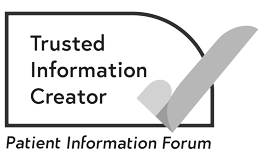Chemotherapy for chronic myeloid leukaemia (CML)
About chemotherapy for chronic myeloid leukaemia (CML)
Chemotherapy uses anti-cancer (cytotoxic) drugs to destroy or damage leukaemia cells. It works by disrupting the way leukaemia cells grow and divide.
Most people with chronic myeloid leukaemia (CML) are treated with targeted therapy drugs called tyrosine kinase inhibitors (TKIs). But sometimes, chemotherapy is also given. It can be given on its own or in combination with a TKI.
Chemotherapy may be given:
- while you are waiting for test results to confirm you have CML
- with a TKI to treat blast phase CML
- if the CML has not responded to TKI treatment
- before a stem cell transplant.
Low-dose chemotherapy capsules for CML
Some people may be given low-dose chemotherapy if the number of white blood cells is very high when they are first diagnosed with CML.
The most commonly used chemotherapy drug for CML is hydroxycarbamide. This can help to reduce very high numbers of white cells in the blood when the CML is in the chronic or accelerated phase.
You take this as capsules that you swallow. Your doctor, nurse or pharmacist will talk to you about this treatment and its possible side effects before you agree (consent) to have treatment.
Combination chemotherapy for CML
If the CML is in the blast phase, you may be given a combination of chemotherapy drugs. This usually involves a nurse giving you 3 or 4 chemotherapy drugs into a vein (intravenously).
The most common combination drug treatment is called FLAG-Ida. This name uses the initials of the drugs used:
- fludarabine (Fludara®)
- cytarabine (ara-C)
- G-CSF (granulocyte-colony stimulating factor)
- idarubicin (Zavedos®).
G-CSF is not a chemotherapy drug. It is a type of protein called a growth factor that increases the number of white blood cells in the blood. FLAG-Ida is usually given with a TKI.
Low-dose chemotherapy capsules for CML
Some people may be given low-dose chemotherapy if the number of white blood cells is very high when they are first diagnosed with CML.
The most commonly used chemotherapy drug for CML is hydroxycarbamide. This can help to reduce very high numbers of white cells in the blood when the CML is in the chronic or accelerated phase.
You take this as capsules that you swallow. Your doctor, nurse or pharmacist will talk to you about this treatment and its possible side effects before you agree (consent) to have treatment.
Combination chemotherapy for CML
If the CML is in the blast phase, you may be given a combination of chemotherapy drugs. This usually involves a nurse giving you 3 or 4 chemotherapy drugs into a vein (intravenously).
The most common combination drug treatment is called FLAG-Ida. This name uses the initials of the drugs used:
- fludarabine (Fludara®)
- cytarabine (ara-C)
- G-CSF (granulocyte-colony stimulating factor)
- idarubicin (Zavedos®).
G-CSF is not a chemotherapy drug. It is a type of protein called a growth factor that increases the number of white blood cells in the blood. FLAG-Ida is usually given with a TKI.
High-dose chemotherapy for CML
People who are treated with a stem cell transplant will have intensive, high-dose chemotherapy for several days before the transplant. This process is called ‘conditioning’ of the bone marrow.
Side effects of chemotherapy for CML
If you are taking a single chemotherapy tablet, the side effects are usually mild.
Treatment with a combination of 2 or more chemotherapy drugs may cause more severe side effects. Your doctor, nurse or pharmacist will tell you what to expect.
We have more information about each different type of chemotherapy, its side effects and how to help manage these.
The more common side effects of chemotherapy include:
- feeling sick
- risk of infection, because of a lower number of white blood cells
- bruising and bleeding, because of a low number of platelets
- anaemia (a low number of red blood cells)
- a sore mouth
- changes to your bowel function (constipation or diarrhoea)
- tiredness (fatigue)
- hair loss
- numb or tingling hands or feet
- changes to fertility.
We have more information about treatment for CML.
About our information
This information has been written, revised and edited by Macmillan Cancer Support’s Cancer Information Development team. It has been reviewed by expert medical and health professionals and people living with cancer.
-
References
Below is a sample of the sources used in our chronic myeloid leukaemia (CML) information. If you would like more information about the sources we use, please contact us at
informationproductionteam@macmillan.org.uk
National Institute for Health and Care Excellence (NICE). Asciminib for treating chronic myeloid leukaemia after 2 or more tyrosine kinase inhibitors (Published 03 August 2022). Available from: www.nice.org.uk/guidance/ta813 (accessed July 2023).
Smith, G, Apperley, J et al. A British Society for Haematology Guideline on the diagnosis and management of chronic myeloid leukaemia. British Journal of Haematology. 2022. Volume 191. Pages 171-193. Available from: onlinelibrary.wiley.com/doi/10.1111/bjh.16971 (accessed July 2023)
Smith, G, Apperley, J et al. A British Society for Haematology Guideline on the diagnosis and management of chronic myeloid leukaemia. British Journal of Haematology. 2022. Volume 191. Pages 171-193. Available from: onlinelibrary.wiley.com/doi/10.1111/bjh.16971 (accessed July 2023)

Reviewer
Consultant Haematologist and Honorary Clinical Senior Lecturer
Queen Elizabeth University Hospital, Greater Glasgow and Clyde
Date reviewed

Our cancer information meets the PIF TICK quality mark.
This means it is easy to use, up-to-date and based on the latest evidence. Learn more about how we produce our information.
The language we use
We want everyone affected by cancer to feel our information is written for them.
We want our information to be as clear as possible. To do this, we try to:
- use plain English
- explain medical words
- use short sentences
- use illustrations to explain text
- structure the information clearly
- make sure important points are clear.
We use gender-inclusive language and talk to our readers as ‘you’ so that everyone feels included. Where clinically necessary we use the terms ‘men’ and ‘women’ or ‘male’ and ‘female’. For example, we do so when talking about parts of the body or mentioning statistics or research about who is affected.
You can read more about how we produce our information here.




